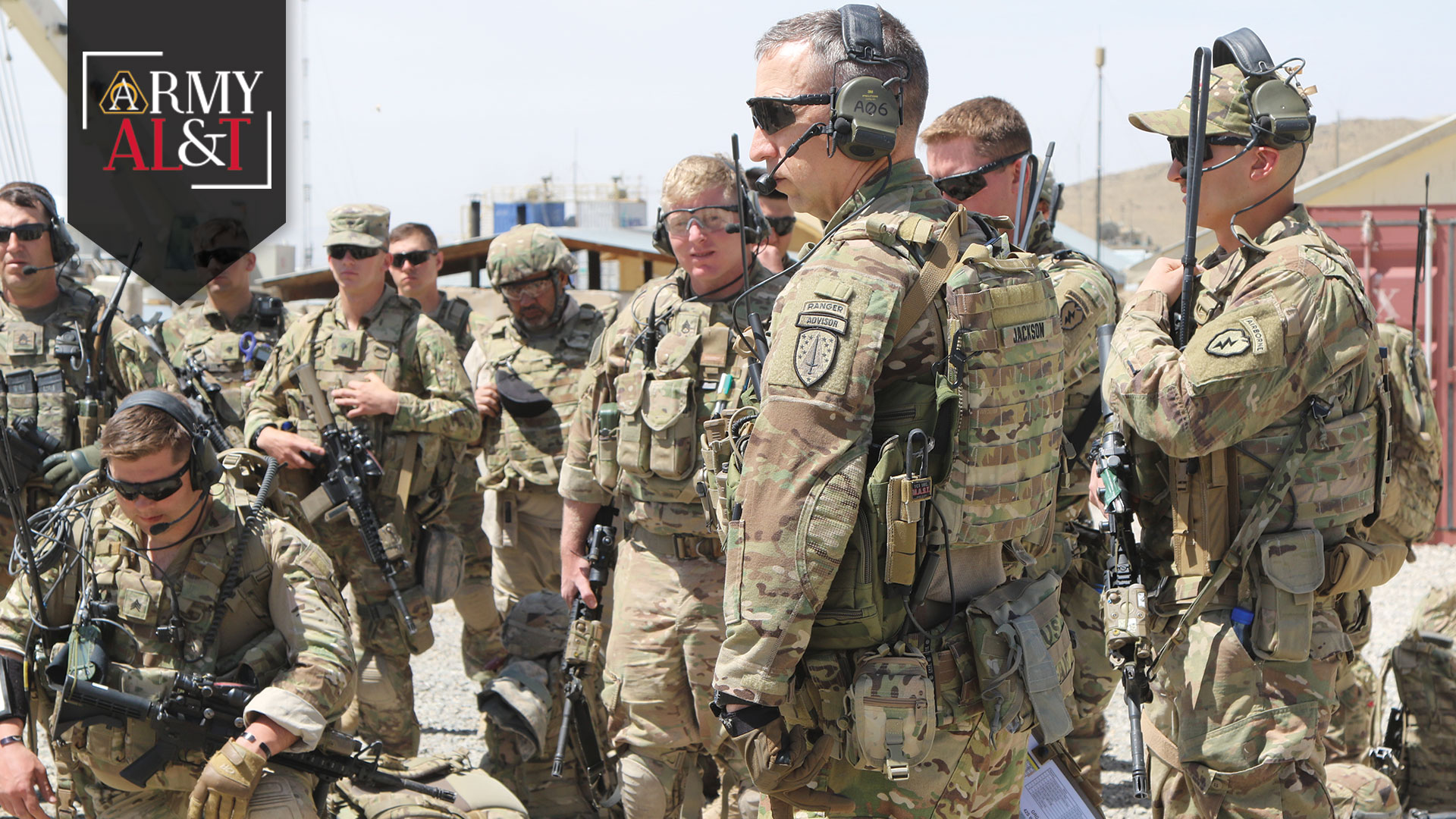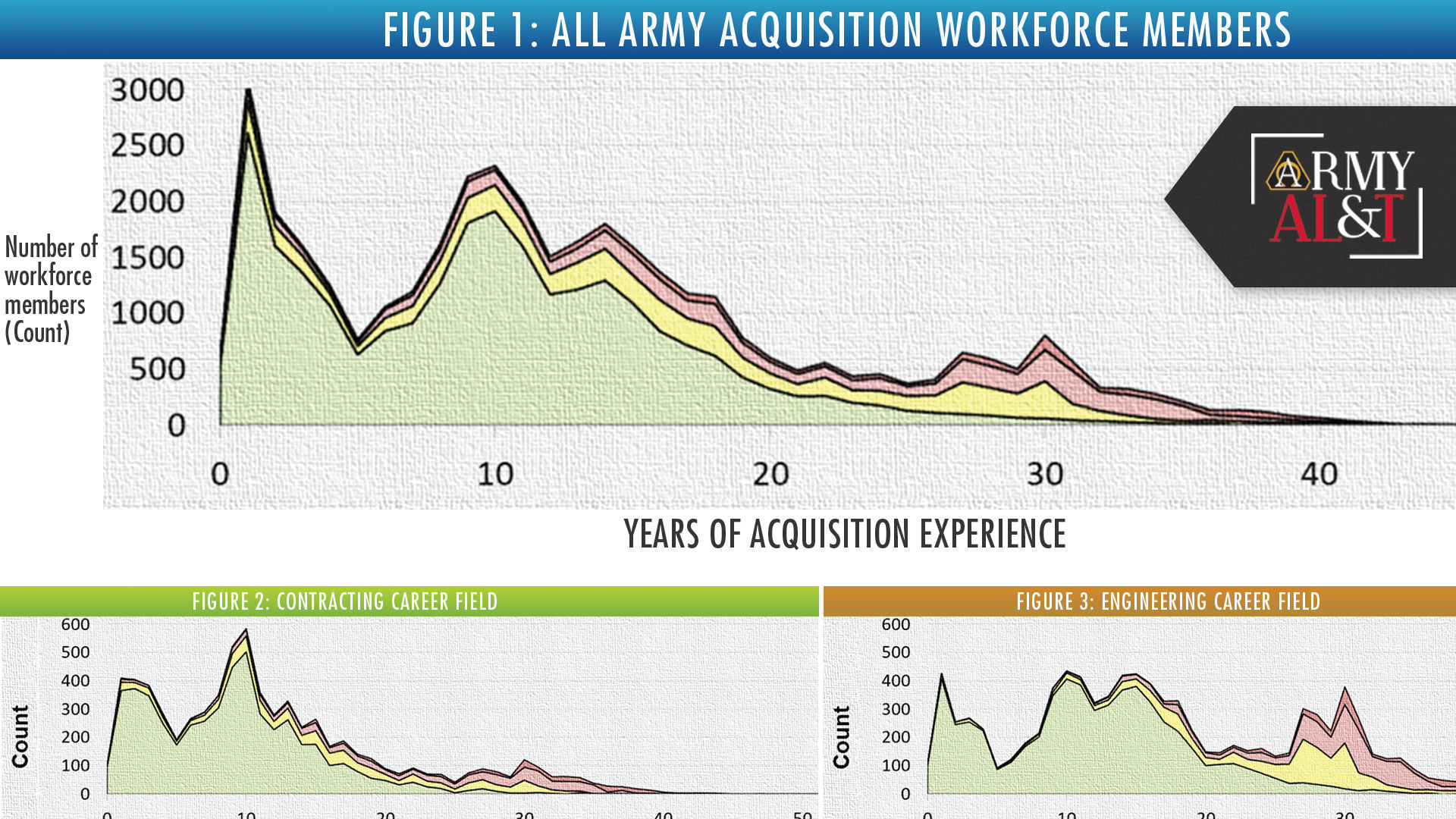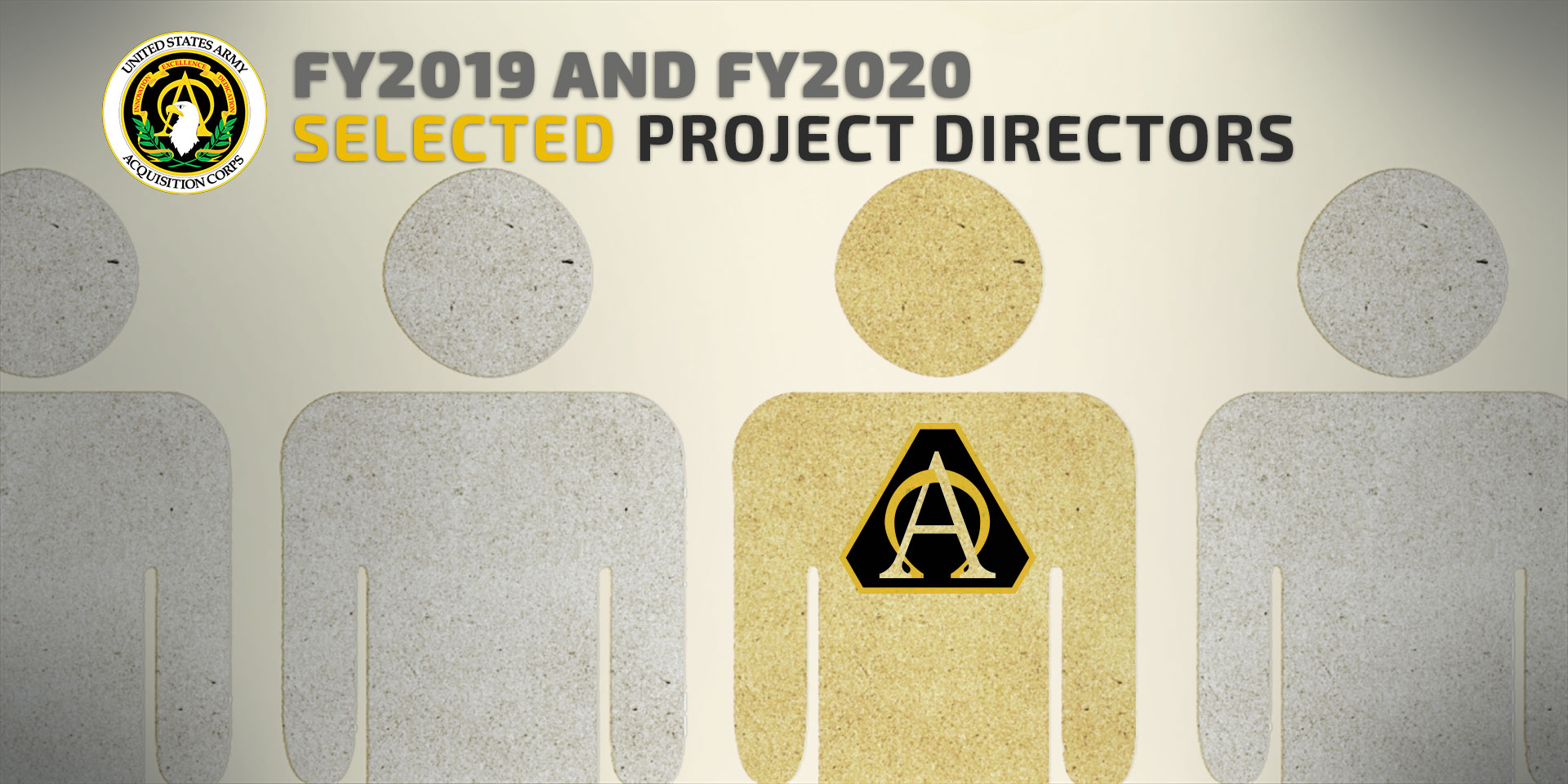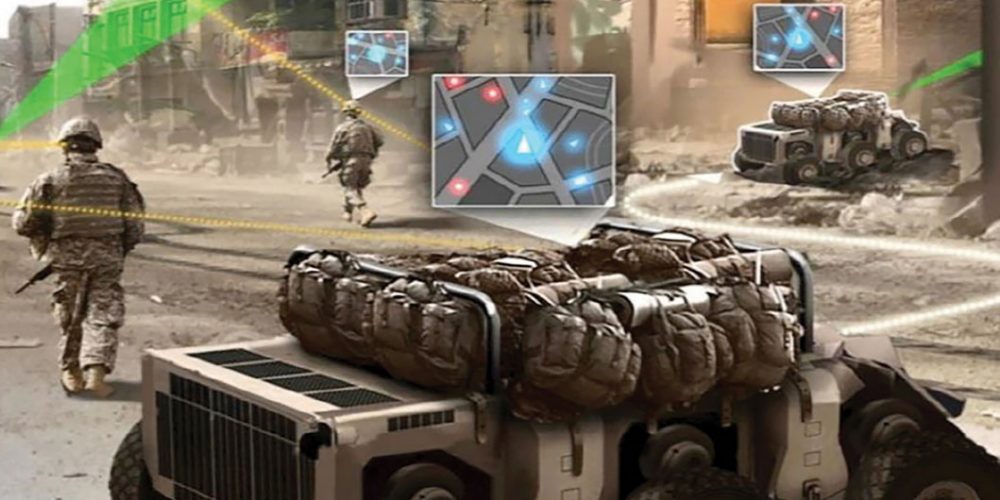By Mr. Stephen F. Conley and Dr. Craig M. Arndt
Since the start of the Global War on Terrorism, the acquisition community has been focused on providing Quick Reaction Capabilities (QRC) to Warfighting units in theater. Some of this equipment is found to be so effective that it is worth keeping and fielding to the entire service. When a service decides that a QRC is worth keeping, the capability must transition and become an enduring capability otherwise known as a formal Program of Record (POR). The Department of Defense (DoD) has struggled with how to execute this transition for years. This paper provides a conceptual process to transition a QRC to a POR.
In a 2016 Defense Acquisition, Technology and Logistics (AT&L) magazine article, Mr. Kendall, Under Secretary of Defense for Acquisition, Technology and Logistics, stated that “DoD Instruction (DoDI) 5000 series guidance does not address the process of the transition of QRCs to PORs” (Kendall, 2016, p. 5).
The process to equip a unit with a QRC is documented in DoDI 5000.02 along with the process for fielding a POR. The policy for determining if a QRC is to become a POR is known. But when a program manager (PM) is given the mission to transition a QRC to a formal POR, processes are misaligned and inefficient. For example, a QRC does not typically have a POM funding line to support resource allocation decisions. In addition, the acquisition program office is tasked with developing a litany of documents required to support a POR.
Policy has bifurcated traditional and urgent acquisition and there is no document that attempts to explain transition between the two processes. For instance, the 2017 DoDI 5000.02 Change 2 describes both the traditional and the urgent (rapid) acquisition systems but does not provide direction on the transition of urgent programs to traditional programs. In addition to the overarching policy laid out in the 5000 series, the Army has several regulations that govern specific aspects of the acquisition systems. Army Regulation 71-9, Warfighting Capabilities Determination (AR 71-9, 2009), prescribes, identifies, determines, and integrates policies of required warfighting capabilities. Army Regulation 73-1, Test and Evaluation Policy, prescribes implementing policies for Army test and evaluation (T&E) activities and the 2015 Department of the Army Memorandum on the nonstandard equipment (NSE) Army Requirements Oversight Council (AROC) Process. These documents provide extensive guidance on both traditional and urgent acquisition but like DoDI 5000.02 do not provide significant guidance on the Army rapid acquisition systems transition.
This paper used the disparate literature to support the current DoDI 5000.2 and created a model and process for transitioning urgent acquisition initiatives into PORs. The model is intended to help acquisition leaders decide on a specific tailored program model to transition a QRC to an enduring capability. The following recommendations are made to set the stage for further discussion and potential research on the topic of urgent acquisition.
First, the deliberate acquisition process builds towards milestone (MS) C while the urgent acquisition transition process would back into a MS C. To do this, codifying the terminology and process steps is necessary to alleviate confusion.
Second, to successfully transition a QRC to POR, aligning the major processes, [Joint Capabilities Integration and Development System (JCIDS); the Planning, Programming, Budgeting and Execution System (PPBES); and the Defense Acquisition System (DAS)] is a must. The Army’s efforts to align the major processes on requirements, acquisition and budget through their Nonstandard Equipment (NSE) Army Requirements Oversight Council (AROC) and Strategic Portfolio Analysis Review (SPAR) events is a current example that enables a potential program model for urgent acquisition. At the NSE AROC, if the urgent program receives the disposition decision to transition a QRC to POR an AROC Memorandum (AROCM) must designate a Program Executive Office (PEO) take charge of the new program. If a SPAR decides to keep the rapid program and field it to the Army, the Army Acquisition Executive or designee would need to create a POR with an Acquisition Decision Memorandum (ADM). This should be done at a MS D. MS D would be a milestone decision authority (MDA) decision that defines for the transitioning NSE a tailored list of required documentation to meet MS C. With the requirements, acquisition, and budget processes now aligned the path forward has been shaped for success and a PM has everything necessary to drive towards a MS C. The urgent acquisition transition process would look something like figure 1 below.
Recommendations
These recommendations are provided as a starting point for senior acquisition professionals to consider when discussing the next update of DoDI 5000.02.
Lexicon. It is recommended that different terminology be used with each separate process of the DAS via the concept of precision in language. The deliberate process would use the terms fielding and POR. The intent of the deliberate acquisition process is to field a POR to an entire service. The urgent process would use the terms equipping and QRC. The intent of the urgent acquisition process is to equip a QRC to a unit. Equipping vs fielding and QRC vs POR create a lexicon to eliminate terminology and process confusion within a dual acquisition system. It keeps it simple.
Milestone E (MS E). Acquisition policy has formalized both a “Deliberate Acquisition” process and an “Urgent Acquisition” process. Following the lexicon recommendation above the acquisition language must also separate the major decision points of these processes. The Deliberate Acquisition process begins with MS A and builds through MS B ending with MS C. At MS C the program gets a fielding decision for an entire service which carries the process through sustainment and final disposition.
The Urgent Acquisition process begins with an Operational Needs Statement (ONS) or Joint Urgent Operational Needs Statement (JUONS) and drives towards an equipping decision for a specific unit. In enclosure 13 of DoDI 5000.02 this decision is called the production and deployment milestone. This paper recommends the milestone be formally named MS E. MS E would be the decision to equip a unit with an NSE material solution using the urgent acquisition process. The equipping decision would be limited to the amount needed to complete the entire requirement under urgency. NSE material is defined as, “equipment that has not been type-classified, is not an acquisition program or component of a program, and has typically been procured to support an urgent or emergent operational need.” (Anderson, 2015, p. 2) Changing the name forces the community to separate the two processes: deliberate and urgent. It sets the tone and intent of the two processes. Unlike the deliberate process that builds a new capability from MS A to MS C, the urgent process equips a unit quickly at MS E and if later determined works backward to a MS C if the service needs it as an enduring capability.
Disposition Determination. Enclosure 13 of DoDI 5000.02 states that no later than one year after the program receives the production and deployment milestone, the now recommended MS E, the DoD Component will conduct a Disposition Analysis which will recommend one of the following options: Termination, Sustainment or Transition. This paper recommends that the DoDI go one step further. The DoD Component must also align the PPBES with the DAS appropriating funds to enable the QRC transition to POR. The Army’s AROC and SPAR efforts are a current example of how to align these processes.
Milestone D (MS D). The second milestone of this potential urgent capability acquisition process would be Milestone D formalizing the decision to transition to a POR. We recommend that to prepare for a MS D, the PM and staff would focus on tailoring the business, technical, and support strategies, and associated documentation. Another prerequisite to MS D would be for each service to develop decision points that document the transition of the urgent capability to new Programs of Record thus aligning the Defense Management process for requirements, budget, and acquisition. MS D would empower the MDA to tailor a number of program aspects: reduce documentation by authorizing waivers; set developmental and operational testing to prepare for a full material release, review contracting, and more. This tailoring effort would minimize what the QRC would have to prepare to reduce program risk wherever possible. The results of MS D would be to create a POR from the QRC and focus this new POR on a path to a MS C fielding decision.
Mandate disposition decision as handoff point. Currently, most organizations involved with urgent acquisition are primarily focused on just getting equipment to the field. These organizations should remain the proponent for the urgent capability until the component level disposition decision point. If the QRC is to become a POR, this decision point becomes the handoff from the urgent acquisition organization to its associated deliberate acquisition organization, typically a PEO.
Mandate Data collection to shape testing. Organizations involved with equipping a unit with a QRC should be required to collect developmental and operational data in preparation for the component level disposition decision. This should be done in conjunction with the appropriate operational test agency (OTA). AR 73-1 already has the Army’s OTA, the Army Test and Evaluation Command, writing a C&L report for the production and disposition decision or MS E.
Aligning the Defense Management processes. The Army organizations involved with urgent acquisition should work with the Training and Doctrine Command to codify an updated capability document to replace the ONS or JUONS. This would successfully shape the requirements process for transition. Army organizations involved with urgent acquisition should work with the appropriate PEO to ensure cost estimates and funding profiles are understood and can be inserted into the PPBES. The Army’s Rapid Capabilities Office is a good example: “The Rapid Capabilities Office is a total Army effort that will leverage capabilities and expertise from across the service, especially the Army staff, program executive offices, training and doctrine community, intelligence community and science and technology community.” (Stalder, 2016) This would provide information about the QRC to support the component level disposition decision and shape the OT needed if the QRC were to transition to a POR.
In 2016, Mr. Kendall issued the challenge that: “DoD Instruction (DoDI) 5000 series guidance does not address the process of the transition of QRCs to PORs” (Kendall, 2016, p. 5). This 2017 paper shows that there is enough current guidance in piece-parts available to create a QRC to POR transition process and update DoDI 5000.02. DoD can meet this challenge and close this gap if its Acquisition Senior Leaders choose to.
References:
Anderson, J. (2015). Interim policy memorandum: Nonstandard equipment (NSE) Army Requirements Oversight Council (AROC) process [Memorandum]. Washington, DC, Department of the Army.
Kendall, F. (2016, July-August). Improving acquisition from within. Defense AT&L, 45(4), 2–7. Retrieved from http://dau.dodlive.mil/files/2016/06/Kendall.pdf.
Stalder, J. (2016). Army launches rapid capabilities office. Retrieved from U.S. Army website: https://www.army.mil/article/174290/army_launches_rapid_capabilities_office.
Mr. Stephen F. Conley has a bachelor’s in Industrial Engineering from Lafayette College and an MBA in Information Systems from City University. He is a Defense Acquisition University Senior Service College graduate, Harvard Senior Executive Fellow and retired Soldier. He is currently the Director, Acquisition Life Cycle Cell for the U.S. Army Communications-Electronics Research Development Engineering Center.
Dr. Craig M. Arndt has extensive experience as a senior executive and technology leader in the research, engineering and defense industries, with extensive experience as an innovative leader in industry, academic and government. Dr. Arndt currently serves as Senior Research Fellow and Professor of Systems Engineering at the Defense Acquisition University. He is often called on as an expert to chair major program reviews, and lead new programs, proposals and technology development.
As a senior scientist at the Air Force Labs and the Air Force Institute of Technology, Dr. Arndt led the development of advanced control systems, as well as imaging and modeling systems for aircraft, smart bombs, and aircraft systems. As an engineer, scientist, inventor, and engineering manager at a number of leading defense contractors, Dr. Arndt was responsible for developing a wide range of communications, sensors, and counter terrorism technologies and systems. Dr. Arndt has led and managed business units, companies, and engineering organizations of all sizes located throughout the United States and internationally. As a program manager he has managed programs ranging from research grants to Category 1D major Department of Defense acquisitions.
Dr. Arndt is recognized as an international expert in biometric systems, human computer interface, sensor(s) and sensor systems, image and signal processing, and artificial intelligence. As an active member of the academic and professional community, he has served as a technical expert for the Army and Defense Science Boards, the CNO’s Strategic Studies Group (SSG), the National Science Foundation, the International Standards Organization (ISO), the IEEE, and other public and private technical organizations, and several major universities, and is past Vice President of the Virginia Society of Professional Engineering.
Dr. Arndt holds five university degrees including a Doctor of Engineering in Electrical Engineering from the University of Dayton, a Master of Arts in National Security and Strategic Studies form the US Navy War College, a Master of Science in Human Factors Engineering and a Master of Science in Systems Engineering from Wright State University, and a Bachelor of Science in Electrical Engineering, Ohio State University. Dr. Arndt has extensive publications of his research and holds 7 US patents.
In addition, Dr. Arndt is a Licensed Professional Engineer, a Certified Human Factors Professional, and holds acquisition certification in Systems engineering, Science and technology management, Test and Evaluation and Program Management.
This article is an honorable mention in the 2017 Maj. Gen. Harold J. “Harry” Green Awards for Acquisition Writing competition. A special supplement featuring the winning entries is online now, and will accompany the print version of the April – June 2018 issue of Army AL&T magazine. If you wish to be added to the magazine’s mailing list, subscribe online; if you’d like multiple subscriptions, please send an email to armyalt@gmail.com.

















